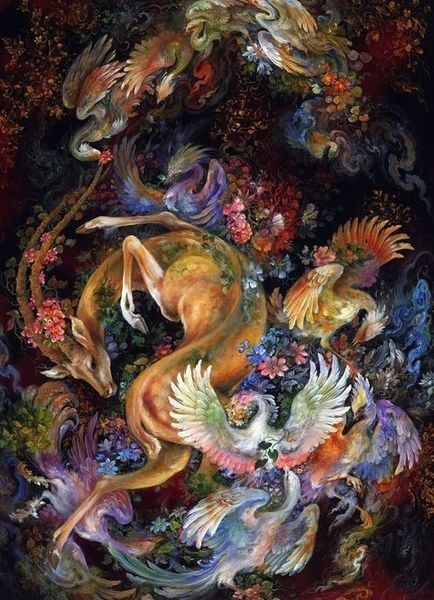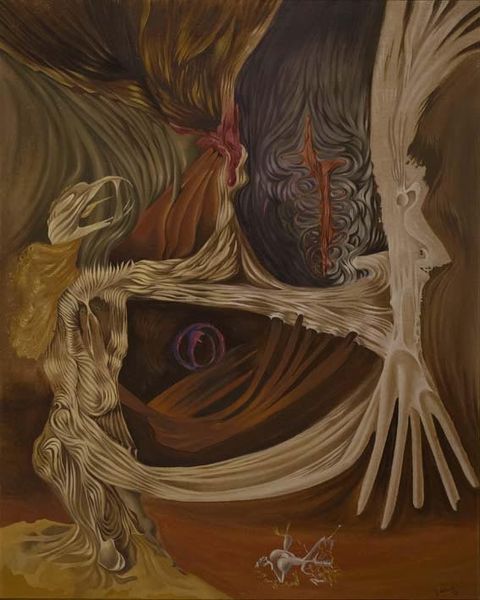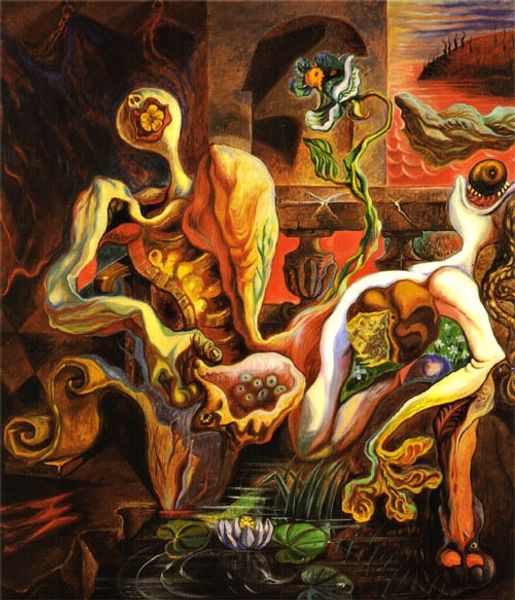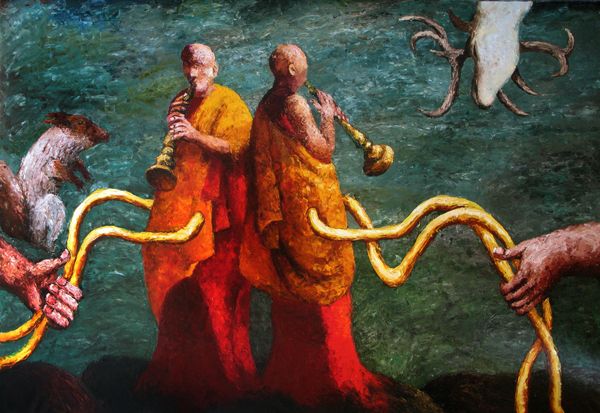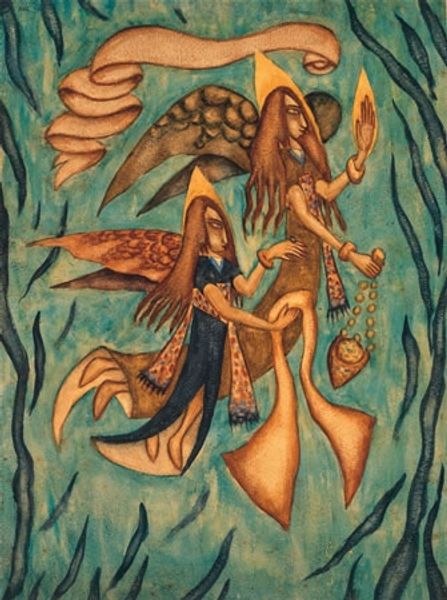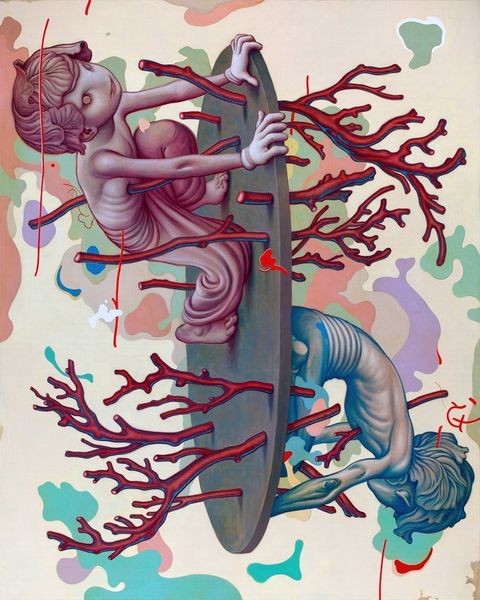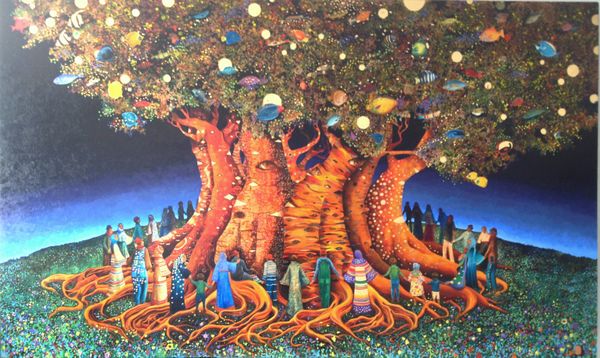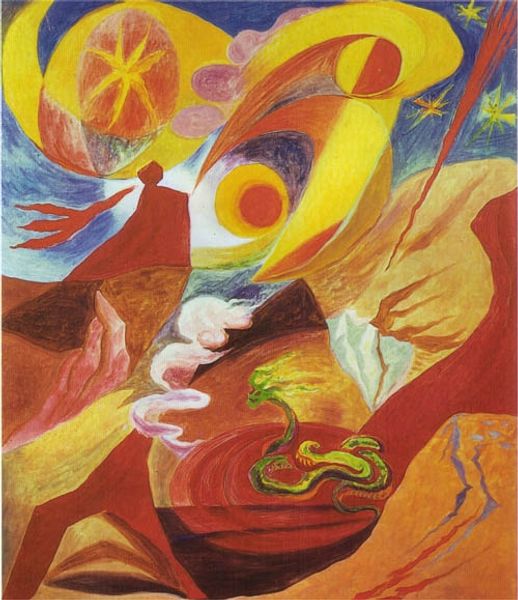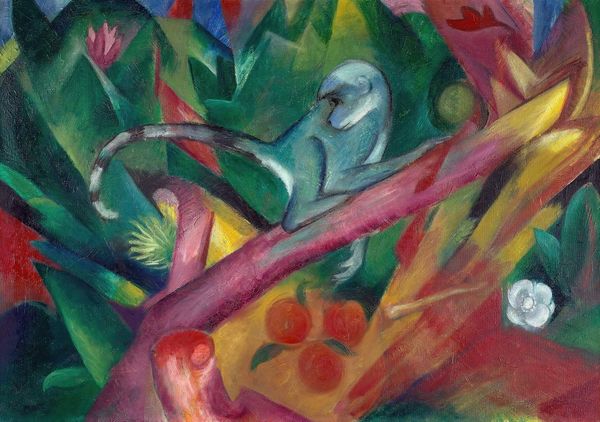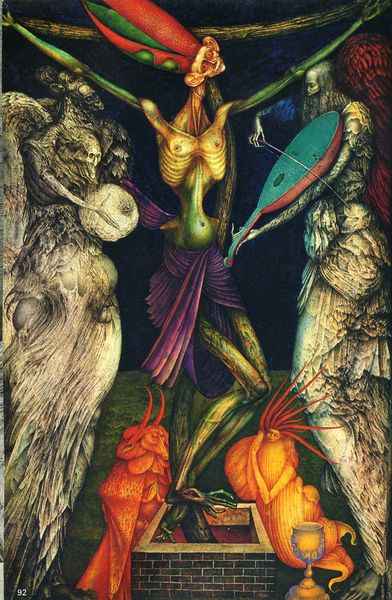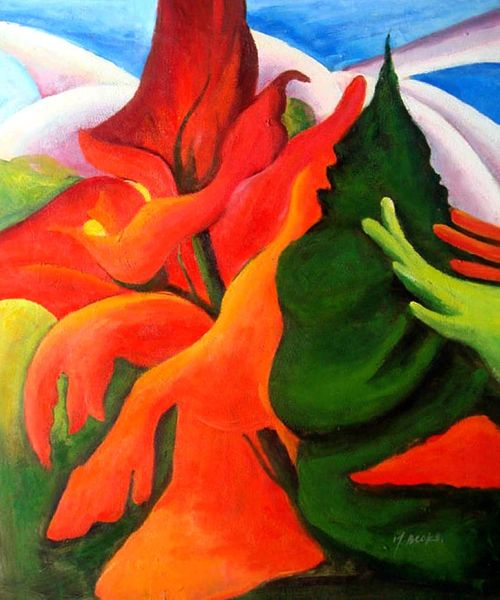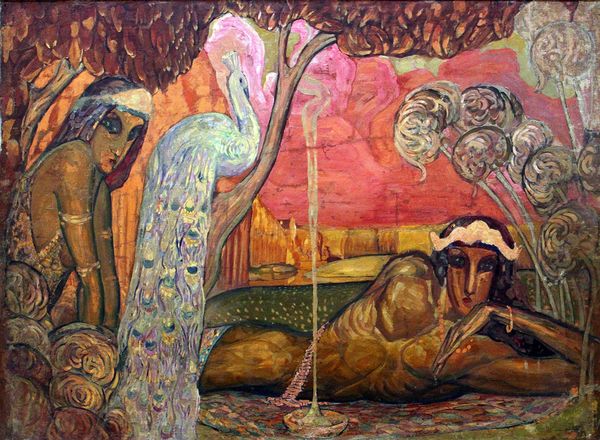
painting, oil-paint
#
narrative-art
#
painting
#
oil-paint
#
landscape
#
fantasy-art
#
figuration
#
oil painting
#
mythology
#
painting painterly
#
surrealism
#
modernism
Dimensions: 90 x 110 cm
Copyright: Diego Rivera,Fair Use
Curator: Before us, we have Diego Rivera's “The Temptations of Saint Anthony,” painted in 1947. It's an oil on canvas, a fantastical landscape teeming with surreal figures, currently held at the Museo Nacional de Arte in Mexico City. Editor: My immediate reaction is… whimsical dread. The palette is warm, but the shapes of these figures… well, they're unsettling, in a rather playful way. The earthy tones create a surrealist painting of the landscape but I don’t believe those are supposed to be earthy figures alone. Curator: Absolutely. Rivera uses this biblical story—Saint Anthony's struggle against temptation in the desert—as a springboard to critique contemporary socio-political realities. We must acknowledge his perspective as a Communist Party supporter at a pivotal time in the global fight against colonial domination. Look at the figures tempting St Anthony; this can be seen as symbolizing exploitation and greed through surrealism. Editor: Yes, but look closer; forget for a moment its subject! Notice how the roots transform into legs. These carrot people form a circle almost mocking the painting traditions we may consider "serious". His lines aren’t precise, it adds a sense of uneasiness, right? Curator: The radishes symbolize, in my perspective, the vulnerability of labor classes—uprooted, exposed. I wouldn’t rule out that there are phallic figures among them: these reflect both social commentary about wealth extraction and colonial rule. This is all the temptation of Saint Anthony personified into surreal forms: labor turned into surrealism as both historical burden, and contemporary critique of colonialism. Editor: While you're definitely on something with social undertones I can’t look away from is how cleverly he subverts our expectations of perspective and form. He’s twisting academic naturalism with cartoonish features which is both funny but gives off a sensation of distress. Curator: I find that his references to the religious—juxtaposed with these grotesque, surreal figures, reminds us to examine and rethink power structures of all kind, even at an individual level. He also invokes Mexico’s own colonial past in all kinds of power struggles. Editor: You know, examining Rivera’s style here reveals this internal dichotomy and how Saint Anthony, to me at least, is anyone trapped in an endless loop of the modern world. Both can co-exist simultaneously within this wild composition. Curator: Exactly. Ultimately, this work stands as an important point, urging us to always analyze structures and not overlook at historical wounds of exploitation by capitalistic greed disguised as surreal temptation. Editor: I see now; the painting serves almost as mirror showing its internal doubts with bizarre, unsettling candor!
Comments
No comments
Be the first to comment and join the conversation on the ultimate creative platform.
